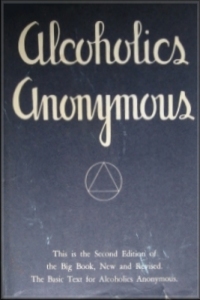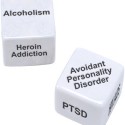A.A.’s ‘Big Book’ celebrates 70 years
Gail L.’s hands rest on the old red book on a table in front of her.
The book, she tells you, saved her life and gave her ”a life worth saving.”
It is ”God’s story of his love for the alcoholic,” she says.
Seven decades ago this month, Alcoholics Anonymous, also called the Big Book, was published.
For 70 years it has helped millions of people worldwide support each other while protecting their identity — thus the avoidance of last names.
Sometime this year, it is expected that the 30 millionth copy will be sold.

Alcoholics Anonymous celebrates their big day!
And as Gail, archivist at the Akron Alcoholics Anonymous office, sits over a first edition of the book known and cherished by recovering people since its publication in April 1939, she talks of the power of its words.
”It is a design for living that really works,” said Gail, 60, sober for 31 years and archivist in Akron since 1983.
Alcoholics Anonymous was founded in Akron on June 10, 1935. Next year will be the organization’s 75th anniversary.
Every year in June, Akron hosts Founders Day and more than 12,000 people from around the world converge to remember the founding of the A.A. movement. Founders Day events this year are June 12-14.
While A.A. does not keep formal membership lists, the group estimates there are nearly 2 million members worldwide who gather in nearly 115,000 groups, including about 1.2 million members in the United States who meet in nearly 54,000 groups.
The first-edition book, one of 4,800 first printings, is kept in a safe at A.A.’s office at 775 N. Main St.
The rare copy was signed June 10, 1948, by A.A. co-founders Dr. Robert Smith of Akron and New York stockbroker Bill Wilson.
An Akron member donated the book.
Also kept in the safe is Dr. Bob’s copy of the manuscript.
The book has been printed in 58 languages, according to a spokeswoman at the A.A. General Services offices in New York City.
Gail said the book is really a history text. She said Wilson wrote most of the first 164 pages, which are still in the most current edition.
Included on those pages are the 12 steps that have become the basis of the A.A. program.
Following the first 164 pages are individual stories, three-fifths of them Akron people who told of their ”strength, experience and hope” and their recovery to sobriety through A.A., she said.
Many of the 18 personal stories included in the first edition were written by a sober, former newspaper reporter named Jim, an A.A. publication said. He, along with Smith, sought out stories of local people with good sobriety records.
The newspaperman’s story was included as well in a chapter titled The News Hawk.
The fourth edition, which came out in 2001, includes two stories of Akron people, Gail said.
Gift from God
The Rev. Samuel Ciccolini, executive director of Interval Brotherhood Home, a drug and alcohol treatment facility in Coventry Township, said the book, studied by those in recovery, is nothing short of a miracle.
”To me, the Big Book is an inspiration of God,” said Ciccolini, 66, known to many as Father Sam.
IBH will celebrate its 40th anniversary in 2010.
”You see its enduring, life-saving value and you know it had to be more than two recovering men that were that brilliant that put something together. It had to be in God’s hands,” he said.
Ciccolini said he recalls two alcoholics coming to talk to his class when he was a student at Akron’s St. Peter’s School in the mid-1950s.
The two recovering men each carried a copy of the Big Book, he said. Ciccolini recalls each man holding it up and saying, ”This book saved our lives.”
Later, when he was a theology student, he said he read the book.
”What it has done to save lives is immeasurable,” Ciccolini said.
The foreword to the first edition begins:
”We, of Alcoholics Anonymous, are more than one hundred men and women who have recovered from a seemingly hopeless state of mind and body. To show other alcoholics precisely how we have recovered is the main purpose of this book.”
The book originally sold for $3.50. It goes for $6 now and will increase to $8 on July 1.
Akronite Scott D., 61, a member of A.A. for a dozen years, has taken part in a men’s Big Book study group since then.
He said the group meets once a week and goes over the first 164 pages, including the chapter Dr. Bob’s Nightmare that tells Smith’s story.
”We read the book and discuss it,” he said.
Scott said a passage that ”registers in my head is we have but a daily reprieve based on the maintenance of our spiritual condition.”
Gail said when she started going to A.A. meetings, she began reading right away.
”I fell in love with the book,” she said.
Gail said that when the book was written, the Akron A.A. community pushed to call it The Way Out and the New York group thought it should be called simply Alcoholics Anonymous.
The New York group won that argument.
source; Akron Beacon Journal
